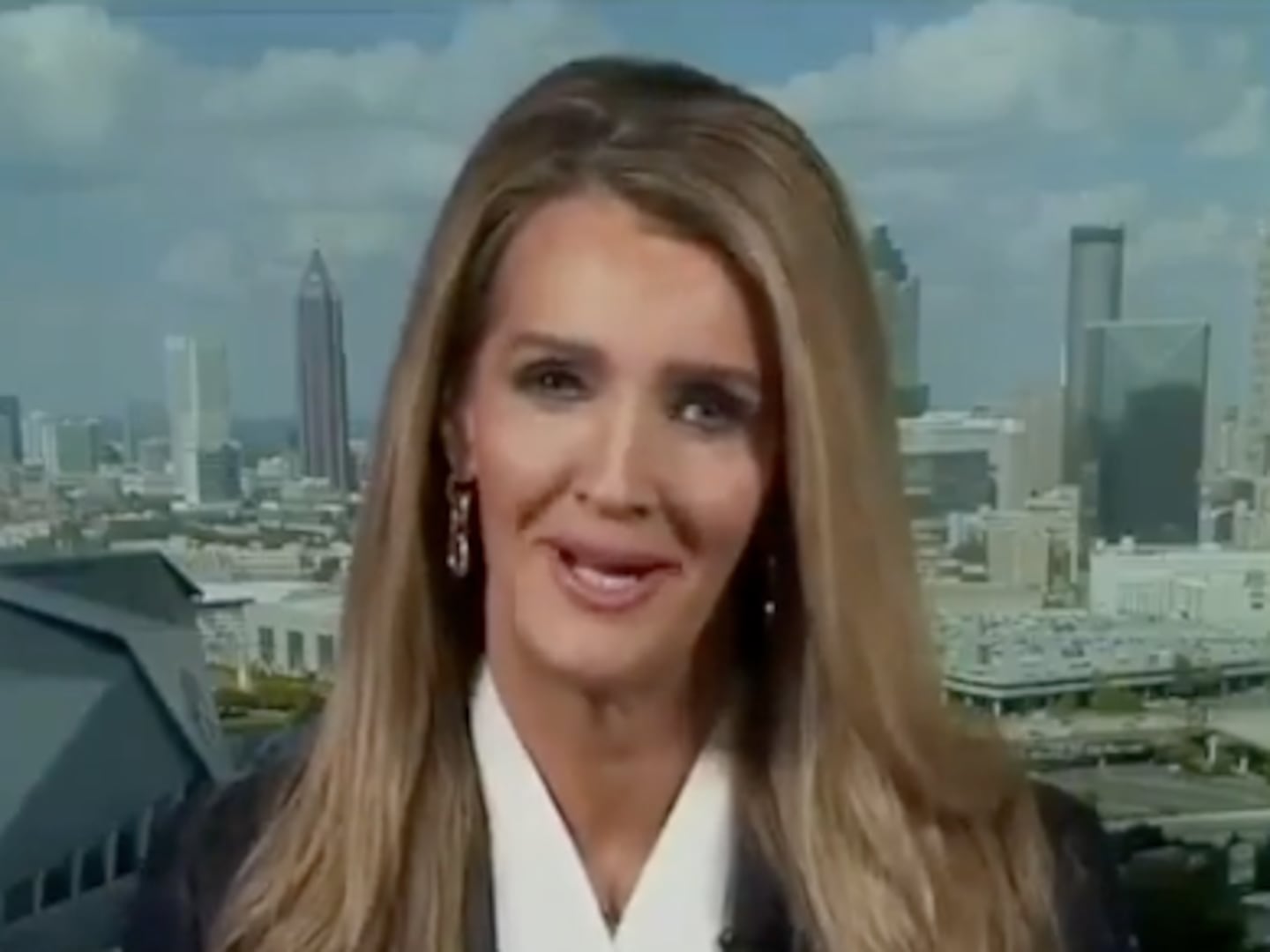Less than 24 hours after President Trump said he was prepared to send troops into cities across America, senior officials in the Pentagon began to try to distance themselves from those words and from the idea itself, underscoring that not one governor had requested additional military assistance from Defense Secretary Mark Esper.
Trump has for days pushed state leaders to take a tougher stance against “antifa” protesters, saying on a call with governors Monday that if they did not mass arrest protesters they would end up looking like “a bunch of jerks.” Then, Monday evening, the president took it a step further.
Police surrounding Lafayette Park in D.C. cleared protesters with tear gas as the president walked through to St. John’s Episcopal Church to pose for a photo op, with the Bible. He declared himself the “president of law and order” and said he would take all the necessary steps to suppress the unrest sweeping the country.
“I have strongly recommended to every governor to deploy the national guard in sufficient numbers. If a city or a state refuses to take the actions that are necessary to defend the life and property of their residents, then I will deploy the United States military and quickly solve the problem,” he added.
Esper, along with other cabinet secretaries, stood next to the president during the remarks in the park after participating in an hour-long call with governors in which he said they needed to “dominate the battlespace” to quell the protests.
But three senior Pentagon officials who spoke with The Daily Beast said they viewed the secretary’s comments on the call as a way to publicly show support for the president. They did not expect the department to actually implement a plan that would reflect the president’s rhetoric and force additional troops upon the states. (More than 20,000 national guard troops already have been deployed to assist local law enforcement during protests.)
These Pentagon officials added that it was the White House, not the Defense Department, that was pushing for active military might in the streets. A senior DOD official said it was the White House that requested military helicopters fly low over protesters in D.C. and that it was part of a broader request from the Trump team that the national guard ramp up its presence in the city. The Associated Press was the first to report about the military flyover being connected to a request from President Trump.
Additionally, the president has pressed aides and Pentagon officials for graphic details on the kind of armored vehicles, military units, aircraft, and even “tanks” that they could potentially send to maintain order in U.S. areas rocked by protests and rioting, according to two people familiar with recent discussions.
One of the sources, a senior administration official, insisted that the president wasn’t ordering tanks to roll down the streets, but was inquiring about “the kind of hardware” that could be used in military shows of force, and at one point Trump threw out the word “tanks.”
“I think that is just one of the military words he knows,” this official said.
The Pentagon did not comment on the record for this story. The White House did not respond to a request for comment.
The discomfort from inside the Pentagon shows the extent to which Trump’s own Defense Department is trying to actively avoid direct involvement in the administration’s plans to force local authorities to accept active military personnel for increased protest control. It also raises questions about how Trump plans to carry out his promises of coercing states to accept military assistance when officials inside the Pentagon are rebuking the idea, claiming it circumvents the normal process for governors formally requesting assistance. (Normally, one senior Department of Defense official said, a governor files a formal request with the Pentagon asking for active-duty troops to assist. The Defense Secretary evaluates the request and either chooses to accept it, modify it, or reject it.)
“That would not be something the [Defense] Secretary would be in a position to do,” one senior official said, referring to Trump’s desire for the Pentagon to pressure states to accept active military troops for help in controlling their streets.
“This would go against the norms of how we normally handle requests for assistance during civil unrest,” another senior official said.
However, if Trump invokes the Insurrection Act, he could unilaterally make the decision to send troops to states. The act empowers the president, in cases of “unlawful obstructions, combinations, or assemblages, or rebellion against the authority of the United States,” to direct the military “to suppress the rebellion.”
The idea of the president using the Insurrection Act was first proposed publicly by Sen. Tom Cotton (R-AR), who seemed to introduce it on a whim on social media. Members of his team on Monday said he had not discussed it with the administration. Another defense official said the Defense Secretary’s team was unaware that the president would be announcing new measures to try to convince local and state officials to accept military deployments.
“There was no communication within the department that this was something we were going to be working on,” the second defense official said.
But less than eight hours later, Trump took to the podium in Lafayette Park, seemingly promising to invoke it if he felt it was necessary.
As of Tuesday afternoon, Trump had not invoked the Insurrection Act. And no states had formally requested assistance from the Defense Department.
But the threat of Trump enacting the Insurrection Act has some state officials on edge. Two officials with knowledge of the situation told The Daily Beast that at least three governors of states experiencing large-scale protests contacted the Trump administration requesting that it not push them to accept active military personnel, claiming it would only inflame tensions on the ground. In some instances, states have seen clashes between protesters and police slow. In Tennessee, for example, police put down their riot shields at the request of protesters as the group moved slowly toward them.
On Tuesday, Gov. Andrew Cuomo said he had pushed back on the president’s request that he take the step to deploy the national guard, saying there was no need for more forces on the ground when the New York City Police Department had enough officers to control the situation. And New York Attorney General Letitia James said the state was prepared to go to court to stop the administration from sending military forces to the state.
“In rare occurrences in this country has civil unrest resulted in the deployment of active duty military personnel. It has caused huge challenges because those individuals aren’t trained and equipped to deal with quelling civil disorder. And it can cause operational confusion,” said John Cohen, the former deputy under secretary for intelligence and analysis at the Department of Homeland Security. “The military also operates under very different rules of engagement than police. Their job is basically to identify an enemy, engage that enemy and potentially kill that enemy. That’s not necessarily that philosophy you want individuals operating under when they are in the situation we’re in today.”
Sen. Tim Kaine (D-VA) on Tuesday said he would offer an amendment to the National Defense Authorization Act that would bar the federal government from using the military against peaceful protests.
“The President is trying to turn the American military against American citizens who are peacefully protesting on domestic soil, which they have every right to do. I’m not going to stand for it,” Kaine said. “I never thought we would have to use the NDAA to make clear that the U.S. military shouldn’t be used as an agent of force against American citizens who are lawfully assembling. I thought that would seem obvious to everyone.”
Even without an amendment, the Pentagon on Tuesday insisted that it does not want active-duty troops out on American streets.
Trump has described Army Gen. Mark Milley, the chairman of the Joint Chiefs of Staff, as “in charge” of the administration’s response to the protests, but a senior Pentagon official said Tuesday that Milley merely “remains an adviser to the president.” The official downplayed Esper’s jarring description of American cities as a “battlespace”—one that earned Esper a rebuke from a former Joint Special Operations Command chief—as reflecting no more than his tendency to use military terminology.
Pentagon officials also suggested that Milley and Esper were “not aware that park police and law enforcement had made a decision to clear the square” of protesters, as one put it to reporters. Esper later reiterated that in an interview with NBC News late Tuesday: “I didn’t know where I was going,” he said. He said he believed they were going to “see some damage” caused by the protests and “talk to the troops.”
In their telling of what happened at Lafayette Park, both men arrived at the White House on Monday afternoon after a meeting of a response task force hosted by the FBI that included Attorney General William Barr and FBI Director Christopher Wray. Trump made the decision to inspect the National Guardsmen deployed to the park, a senior Pentagon official said, and “once they began to walk off the White House grounds, [Milley and Esper] continued with him.”
Both Milley and Esper have been slammed for taking part in the photo op. Milley was accused of acting as a “prop.” And a former defense official accused Esper of violating his oath to defend the Constitution by going along with Trump’s photo-op. James N. Miller, the U.S. undersecretary of Defense for policy from 2012 to 2014, announced in an op-ed Tuesday that he was resigning from the Pentagon’s science board and urged the defense secretary to “consider closely” his actions in the Trump administration.
“All of us would like to stay in a National Guard capacity,” a senior defense official said.
But Pentagon officials cautioned that active-duty forces—a mix of military police and engineering units from Forts Bragg and Drum—are on “shortened alert status” outside the Washington, D.C. area, though not in any states. Late on Tuesday, the Pentagon said those forces include an infantry battalion designated Task Force 504, bringing the troop total to 1,600. Chief spokesman Jonathan Rath Hoffman said the placement of Task Force 504 was “a prudent planning measure,” as the task force is “not participating in defense support to civil authority operations.”
More than 1,200 Guardsmen, mostly from D.C., are currently deployed in the district. Pentagon officials anticipated another 1,500 arriving on Tuesday, with more to come. Additional states contributing Guardsmen to the D.C. protest response include New Jersey, Utah, South Carolina, Indiana, Mississippi, and Tennessee. Pentagon officials called the National Guard support to the police-led protest crackdown an “uncomfortable mission.”









